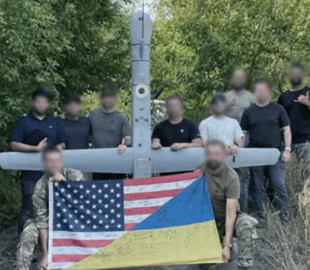
Aircraft with a vertical take-off system are good against Russian electronic warfare, the manufacturer assures in its report.
In 2024, American military drones V-BAT were brought to Ukraine and began to be tested. The Defense Blog site writes about this, referring to the report of the manufacturer company Shield AI.
Shield AI stated in the document that its unmanned aerial vehicle with a system of vertical take-off and landing (VTOL), called V-BAT, was used in real combat conditions to evaluate the characteristics and resistance to Russian means of electronic warfare. The drones were delivered to Ukraine for the first time in June 2024 together with the company's specialists, they successfully completed combat missions, despite the suppression of GPS navigation and communication signals.
For example, V-BAT helped the Ukrainian military locate a Russian Buk M1 anti-aircraft missile system and determine its coordinates. The target was soon destroyed using the HIMARS multiple launch rocket system. This operation demonstrated the UAV's ability to conduct reconnaissance and surveillance, as well as its effectiveness in supporting strike missions.
“In Ukraine, V-BAT demonstrated resistance to electronic warfare, demonstrating autonomy in the most difficult conditions and completing the first successful reconnaissance, surveillance and target designation mission in conditions of prolonged and long-term operation in conditions of GPS and communication interference”, — Shield AI said.
The manufacturer has already delivered about 250 V-BAT drones around the world, manufacturing them at its factory in Dallas, Texas. The aircraft are used by the US Special Operations Command (SOCOM), the US Marine Corps, and the US Coast Guard is expected to receive its first units in 2025.
V-BAT is designed to replace old reconnaissance systems and create new drone programs for various customers. It is presented as a universal solution for various combat scenarios due to the ability to take off vertically, combined with a long flight time and good resistance to electronic warfare.
The deployment of Shield AI in Ukraine highlights the growing reliance on modern UAVs to counter evolving threats and conduct precision missions. The company's success with the V-BAT demonstrates how innovations in autonomous systems are changing the conduct of war and strengthening operational capabilities on the front lines, according to the media.

